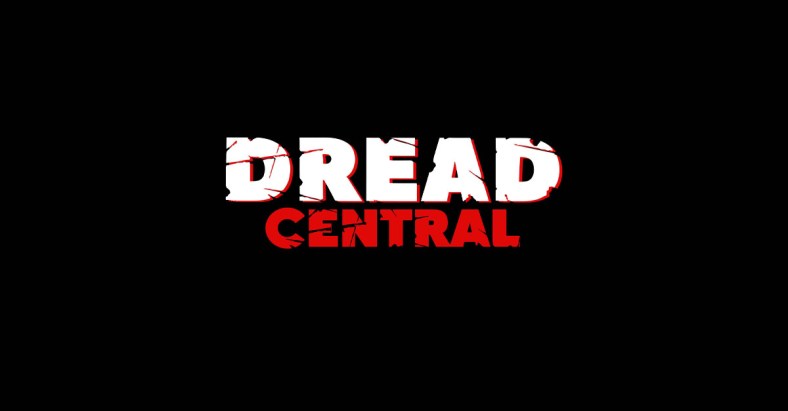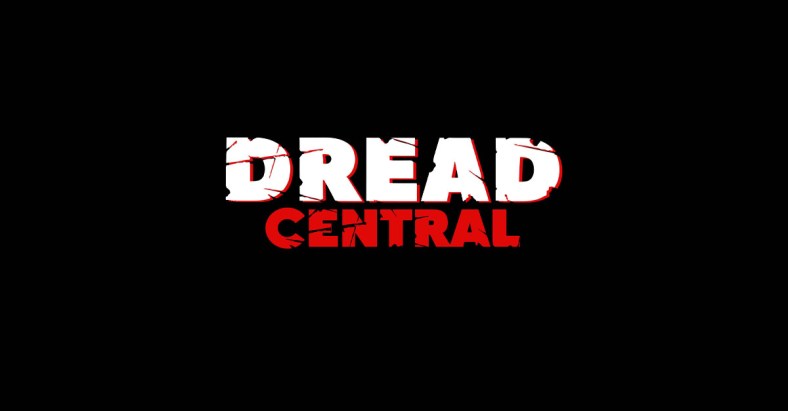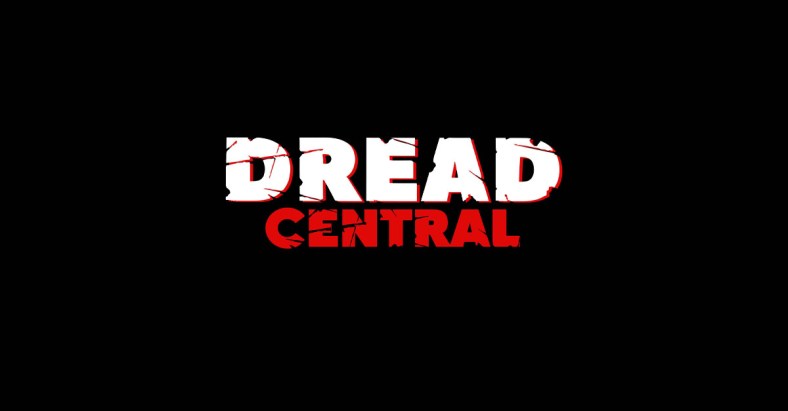Interview: Director Greg Lamberson Talks Haunted History of WIDOW’S POINT

Director Greg Lamberson (Killer Rack, Johnny Gruesome) is probably best known for coming up in the New York City horror scene with the likes of Frank Henenlotter (Basket Case), Jim Muro (Street Trash), and Bill Lustig (Maniac). After directing the seminal horror comedy Slime City in the late eighties, Lamberson eventually relocated to Buffalo and kept his indie ire alive and well by sparking a horror film community in the Nickel City that’s lasted for years. Going on now until September 3rd, the Buffalo Dreams Fantastic Festival that Lamberson helped co-found is in full swing, boasting a complete lineup of films that can actually be attended in person (with masks and social distancing strictly enforced, of course).
In the below conversation, Dread Central spoke with Lamberson about the recent 10th anniversary of Slime City‘s sequel, Slime City Massacre, his new haunted lighthouse movie Widow’s Point (available on DVD and On Demand September 1 from Devilworks), and his longstanding friendship with star Craig Sheffer (Nightbreed, Ritual).
Synopsis: A horror writer is targeted by powerful Supernatural forces when he spends a weekend in a haunted lighthouse.
Dread Central: I do miss being up in Buffalo all those years ago for Slime City Massacre. That was such a fun weekend for me when I was at Fangoria and working with Debbie [Rochon] on the radio show.
Gregory Lamberson: Yeah, that was a memorable weekend that you were up here. (laughs)
DC: It absolutely was, I remember freezing in July.
GL: We were talking about that just the other night, yeah.
DC: I watched some of the 10-year reunion…that abandoned train station, the location, that was torn down years ago, wasn’t it?
GL: It’s still there. The tower that was the actual terminal, they’re pouring a lot of money into renovating that. The tracks and all the debris, all that stuff is still there.
DC: What were some of the other famous films that shot there? I know The Natural did but was Slime City Massacre the only horror film?
GL: Nah, there’s a guy named David Williams who produced a bunch of micro-budget films under a banner called Red Scream Films and he shot like six of them in there. They’re very low end, fetishistic type horror films that really haven’t gone anywhere.
DC: I’ll have to check those out, I’ll watch anything. I’ve been watching a lot of shorts out of Fantasia Fest right now. You really didn’t make any short films when you were starting out, right?
GL: No, I never had any interest, in fact, that’s one of the reasons I didn’t like film school. It wasn’t inspiring me and, at the same point, Jim Muro was in my class and Basket Case had just opened as a midnight movie. I saw that was the way to go. I got to know Frank [Henenlotter] though just coincidentally. I met him because he was a regular customer at the video store I worked at in Times Square. He would come in all the time and buy the twenty dollar versions of Basket Case to give to people.
DC: What was the name of that store?
GL: Well, the chain was King Karol Records and two of the King Karol Records, there were like 10 of them, had the video store in it. But the video store itself was part of a separate chain called Video 83 that was based on York Avenue and 83rd Street.
DC: You’re still really associated with that whole slime punk, New York guerrilla scene. I really think of you now being more a part of the Buffalo film scene.

GL: Yeah, it’s weird. (laughs) Sometimes they call me a Buffalo filmmaker. I don’t mind that because I’ve done so much to build the film industry here that I’m fine with that. Always a New Yorker at heart.
DC: Yeah, absolutely. I was surprised with so many virtual fests happening now that the Buffalo Dreams Film Festival is happening in person this year?
GL: It is…things are going to be crazy because we have no idea what’s going to happen. The theaters are not open but we have a venue that we use called The Screening Room which is a theater, it’s a boutique digital cinema, but they happen to serve booze and food so they’re open as a restaurant. Until one week ago, we just assumed everything would be fine and then we were told that we couldn’t promote the films and that he’s not supposed to sell tickets. So, we’ll see how things go! For the first time, we’re hoping that a lot of people don’t show up. I just really want to show the films on a big screen so that the filmmakers that are here can see them and our regular customers, those people that try and watch everything we show.
DC: Let’s talk about Widow’s Point a little bit. When did you first discover the novel? You knew the author Richard Chizmar, right?
GL: The connection is that Rich has invested in a few of my low budget films, he was one of the investors in Slime City Massacre and Killer Rack. We had talked for awhile about doing something together that he would write and I would direct. He and his son Billy actually came to Buffalo Dreams to show a short film that Billy made.

DC: And Billy has a role in the film, you have your daughter in the film and your wife as producer, so it’s a real family affair.
GL: Yeah, and Craig Sheffer’s daughter is in it and you know John Renna, the Mayor of Slime City, he’s in there as a killer and the little boy is his son.
DC: What about Craig Sheffer’s involvement? He really commits in this movie. Is he someone that likes to talk and tell stories about his career or is that in his rearview?
GL: Well, he’s a really good friend of mine and I probably speak to him once a week, so I hear those stories all the time and I love it. Frequently, I’ll see some obscure movie that I didn’t know he was in and I’ll ask him about it. He’ll say, ‘I don’t remember that film.’ And it’s always because they change the titles and then usually he says, ‘Oh yeah, I never even watched that.’ Yeah, I hear a lot of good stories out of him. A lot of good stories not for print, the dirt on what assholes people really are.
DC: Those are always the best stories, the ones you can’t tell. Without giving away too much of the film, I liked seeing stop motion and miniature effects being used. That’s kind of carrying on the Slime City tradition. Do you always try and put a little stop motion in a film?
GL: It’s not a goal, it’s just that it seems to fit the scene. There’s no way I could’ve done that CGI. On the DVD in the deleted scenes, there’s actually quite a bit more of the stop motion. We actually had wide shots of the creature landing and wrapping its tentacles around the lighthouse. As much as I love stop motion, it was just so different atmospherically than what was going on in the room for that scene that we cut it to the bare minimum.
DC: I was going to ask you where the lighthouse was, you guys experienced some strange happenings during shooting, right?
GL: Yeah, the lighthouse is Dunkirk Historical Lighthouse in Dunkirk, New York, an hour south of Buffalo. I lived there when I was a real little kid and I grew up in the town right next to it which is Fredonia, a college town. I was aware that that lighthouse existed and I looked at that and another one that had a similar design. Fred Olen Ray (Hollywood Chainsaw Hookers) shot a Lifetime type movie in the other one and he specifically didn’t want to shoot in the one we shot in because it’s a working museum. The main room that Craig spends most of his time in, that’s a set we built.

DC: Did anything happen in particular to Craig on set? He was definitely the performer giving off the most energy, so you’d think if there was any ghost that wanted to feed off of it that he’d be the one to get the attention.
GL: Like you said, the Dunkirk lighthouse has a history as being a haunted lighthouse. They know the history of the place, they can tell you who died when, whose ghost people have seen. There are photos of these people spread throughout the house and they’ll say someone was here last week and said this person was standing right behind them. There are some gravestones on the property. What happened with us is we found all of our batteries for sound, for camera, they were draining ten times faster than they were supposed to. At one point, we were shooting in the stairway and the assistant cameraman said to the DP and said, ‘Oh, look at this.’ They went to the monitor for the Red camera and there was a glitch on one frame. They spent like five minutes talking about it and replaying it over and over because none of them had ever seen that type of glitch before. Beyond that, a couple of crew people who were stationed in a room by themselves swear that they felt someone breathing on their neck or standing behind them and they turned around and nobody was there. I’m Scully from X-Files, I don’t believe in any of that stuff. I’m not bothered by it.
DC: I think it adds to the atmosphere though when you’re shooting, you want people a little freaked out.
GL: Craig is definitely a believer in things and he told me that he’s been friends with the guy Travis [Walton] who wrote Fire in the Sky, he totally believes his story. Craig was saying that they brought guys out with a polygraph to set while they were shooting as sort of a publicity thing. And then ten years later when they were at a convention…they did the polygraph again on the real guys and, again, they all passed.
Widow’s Point is available on DVD and On Demand September 1.

Categorized:Editorials Interviews News

